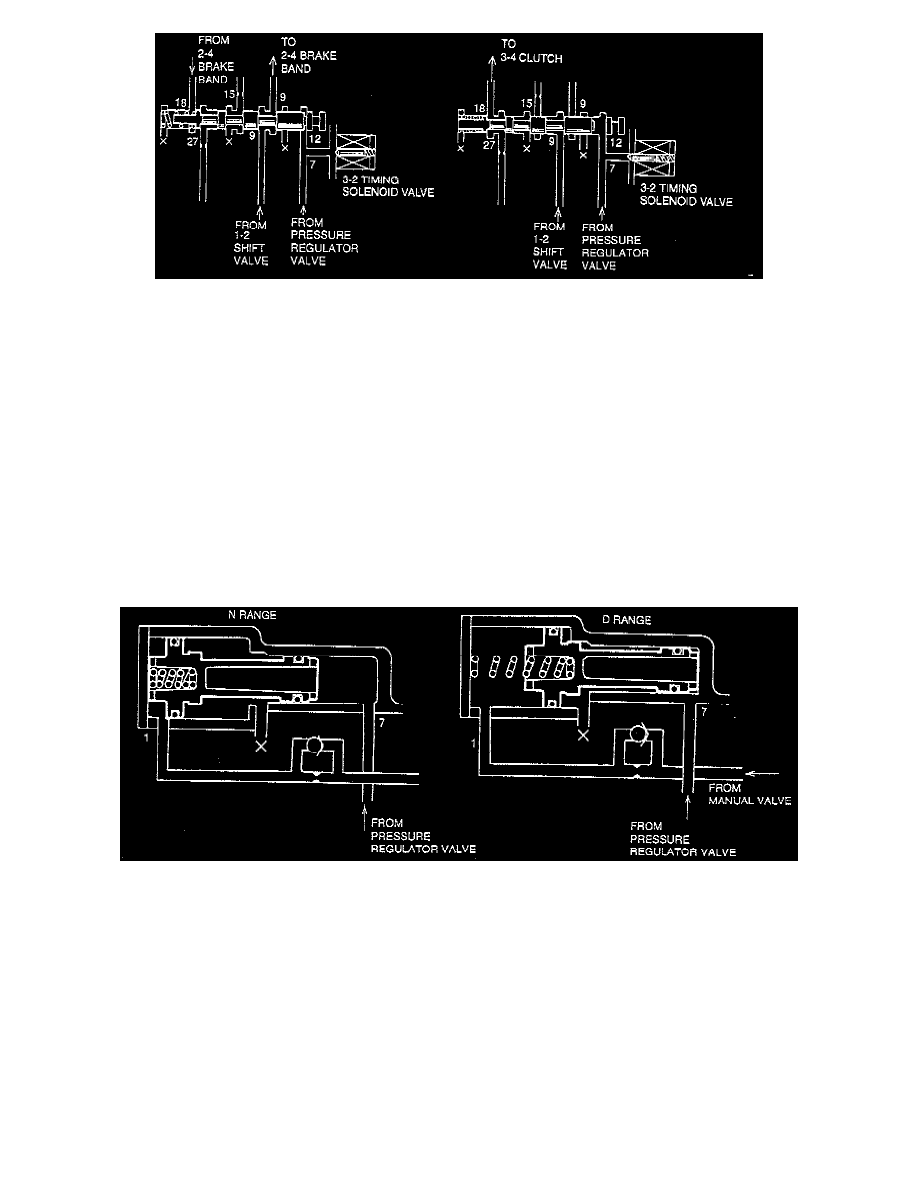Millenia L V6-2.5L DOHC (1997)

The 3-2 timing valve temporarily switches the 3-4 clutch released line pressure and 2-4 brake band released line pressure that are applied to the 3-2
timing valve to reduce shifting shock. The valve operates based on the 3-2 timing solenoid valve ON-OFF signal controlled by the transmission control
module.
Normally, line pressure (12) is retained because the 3-2 timing solenoid valve is turned OFF. The line pressure overcomes spring force to push the valve
to the left side.
When shifting from 1st to 2nd, 2-4 brake application pressure (9) passes through the 3-2 timing valve to engage the 2-4 brake band with the solenoid
valve ON. Brake band application pressure (9) from the other circuit also engages the 2-4 brake band.
When shifting from third gear to 2nd, the 3-2 timing valve drains 2-4 brake release pressure (15) to achieve shifting timing. When 2-4 brake band
application side pressure reaches the specified pressure, the 3-2 timing solenoid valve goes OFF, and the 3-2 timing valve moves to the left to close
outlet port (9).
As a result, the 2-4 brake application side pressure increases gradually, improving 1st to 2nd upshift response, and reducing shift shock.
N-D Accumulator
The N-D accumulator moderates a rapid increase in hydraulic pressure during forward clutch engagement. This reduces shift shock generated when D
range in N range, line pressure (7) is constantly applied to the right side of the piston, pushing it to the left side.
When D range is selected from N range, line pressure (1), which engages the forward clutch, is applied to the piston by the manual valve.
As a result, the combination of line pressure (1) and spring force overcomes the combination of line pressure (7) and spring force, moving the piston
gradually to the right side.
This movement of the piston moderates a rapid increase in line pressure (1).
N-R Accumulator
